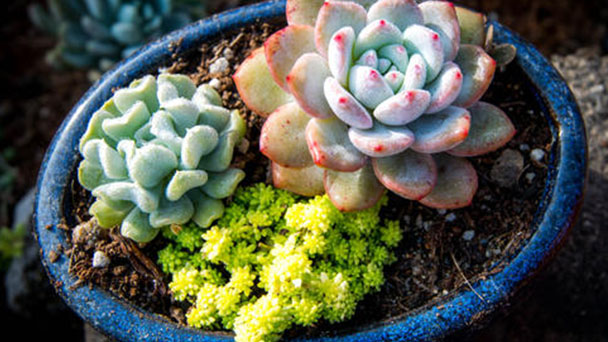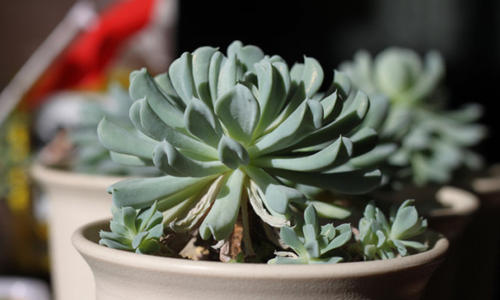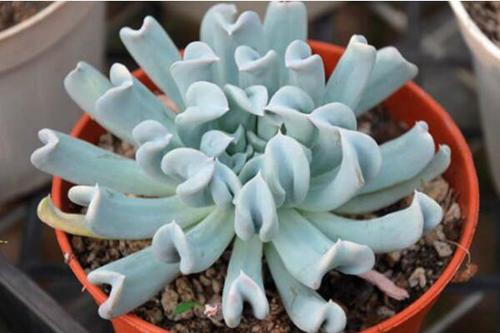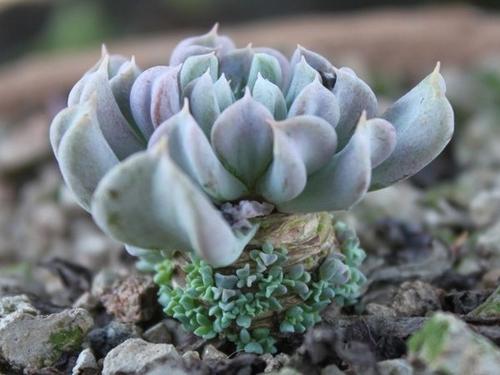How to grow Echeveria Runyonii in autumn
Written by Maggie
Sep 18 2021

During the breeding of Echeveria Runyonii in autumn, it should be placed in a sunny environment for maintenance, and it should also be watered timely. If you want the plant to grow in the pot, you need to put fertilizer on the pot to maintain it, and you need to turn the pot and soil to make the plant grow better. But pay attention to keep the environment ventilated all the time in the autumn, suffer pests and diseases need to spray corresponding insecticides prevention.

1. Get plenty of light for Echeveria Runyonii
The echeveria runyonii is a succulent plant that likes to grow in the sun and grows well with the help of the sun. In autumn, the sun is not particularly strong, so it can be left in the sun for full exposure. This will encourage photosynthesis and prevent the plants from causing disease and insect damage.
2. Water and fertilizer management of Echeveria Runyonii
Echeveria runyonii (Echeveria Topsy Turvy) is also usually grown in autumn.The Echeveria Runyonii plant needs to be watered every 3 to 4 days to make it grow better. If you want the plant to explode the pot, then you also need to give the pot soil in a timely manner, but not too much fertilizer. When November enters the winter, we need to control water and stop fertilizer maintenance.

3. Turn the pot and change the soil for Echeveria Runyonii
When it comes to the best way to grow the Echeveria Runyonii in the fall, every two years, the Echeveria runyonii needs to be turned over and maintained, usually in the fall. First of all, the old soil of the plant roots should be timely treated, and the decayed roots should be cut off, mixed with decayed leaf soil, perlite and other materials, and then it can be cured in the basin again.
4. Echeveria Runyonii disease and insect control
Echeveria Runyonii common disease:
Black rot.Once the disease occurs, the diseased area is cut off, and the wound is dried and then sprayed with chlorothalonil.
Rust disease. Echeveria Runyonii rust is caused by rust fungus. Rust fungus causes local infection only commonly, suffer a place to be able to produce the small blister dot of different color or blister form, cup form, hair because of sporogenous accumulation, some still can cause coarse skin symptom on branch, or cause deciduous leaf, bad growth to wait. In severe cases, the spores cluster into dense patches, and the plant quickly dies due to the evaporation of much water from the body.
Special Echeveria Runyonii (Echeveria Topsy Turvy) rust prevention and control: Triazole fungicide is an ideal agent with good prevention and control effect, long duration of efficacy, and both protective and therapeutic effects.The common varieties are pink rusting, hydroxyrusting, Teprazole (Supralil), Rick-show, etc.
Bituminous coal disease. Bituminous coal disease often occurs in a poorly ventilated environment. The Echeveria Runyonii leaves look as if they are stained with soot, which is very ugly. Clean up coal dirt as soon as it is found.
Prevention and treatment of Bituminous coal disease: it can be treated by spraying diluted chlorothalonil, carbendazil and other fungicides. Prevention can be mixed with a little chlorothalonil, carbendazil and other fungicides in the soil.

Latest Updated
- Benefits of Bugleweed - 7 Science-backed Health Benefits
- Bugleweed Dangers & Side Effects - Is It Poisonous?
- How to Plant Evergreen Trees - What You Should Know
- When to Plant Evergreens - Grow Guide for Evergreen Trees
- 12 Wonderful Evergreen Shrubs for Your Garden
- 12 Popular Evergreen Plants with Pictures for Beginners
- When And How To Prune A Lilac Bush Like a Pro
- How to Grow & Care for Lilac Vine (Hardenbergia Violacea)
- Japanese Lilac Tree (Syringa Reticulata) Care & Propagation Guide
- Shumard Oak Pros and Cons - What to Know
Popular Articles
- Winter maintenance of Antirrhinum Majus
- How to Grow Terminalia Mantaly Tree
- How to Grow and Care for Crossostephium Chinense
- How to grow Antirrhinum Majus in spring
- Peristeria Elata (Dove Orchid) Profile: Info & Care Guide
- Underwatered Snake Plant (Sansevieria Trifasciata) - Signs And How To Fix
- How to Care for Brazilian Jasmine Plant (Mandevilla Sanderi)
- How to Grow & Care for Graptopetalum Purple Delight in Summer
- Rosa Chinensis (China Rose): Plant Growing & Care Tips
- How to Care for Baby Sun Rose (Aptenia Cordifolia)